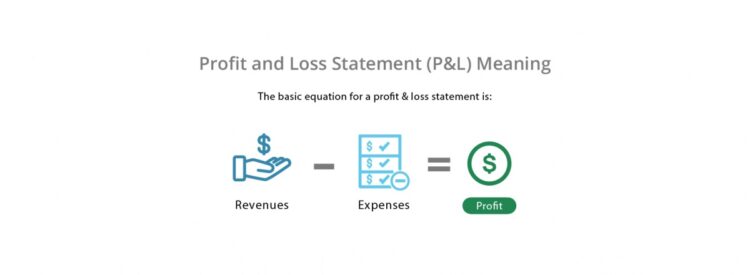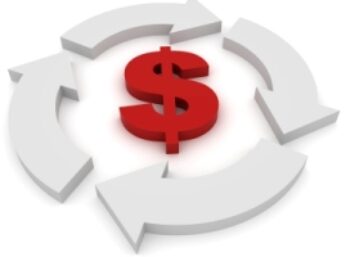What Does P&L Mean?
Profit and loss (P&L) statements are one of the three financial statements used to assess a company’s performance and financial position. The two others are the balance sheet and the cash flow statement.
The profit and loss statement summarizes all revenues and expenses a company has generated in a given timeframe. This summary provides a net income (or bottom line) for a reporting period. The P&L reporting period can be any length of time, but the most common are monthly, quarterly, and annually.
A P&L statement is also known as:
- income statement
- statement of earnings
- statement of operations
- statement of income.
Why Is the Profit and Loss Statement Important?
At its most basic, the P/L statement shows whether a company is making money or not. All companies need to generate revenue to stay in business, making the P&L statement essential.
Revenues are used to pay expenses, interest payments on debt, and taxes. After all the costs of doing business are paid, the remaining amount is called net income. Net income is theoretically available to shareholders, however, the company will often keep these earnings for future investment instead of paying out dividends.
Companies don’t always have a positive net income at the end of a P&L. If a company is suffering a ‘loss’, this means that it's spending more than it earns (also known as being ‘in the red’).
How Do You Calculate Profit and Loss?
There are several components to any profit and loss structure, but the simplest way to calculate profit and loss is to:
- Add up all income (revenue)
- Add up all of the expenses (e.g. COGS, operating expenses, interest, taxes)
- Subtract the difference between the two
There are plenty of accounting software applications that can help you generate a basic P&L statement. This is especially useful for small business owners who aren’t ready to hire an accountant yet.
P/L Formula
The basic profit and loss statement formula is:

How to Create a Profit and Loss Statement
A profit & loss statement can be prepared by a bookkeeper, accountant, or accounting software (like Quickbooks).
Statement of Profit and Loss Formula
Regardless of the industry, each example of a profit and loss statement the statement of profit and loss format involves five main sections:
- Total Revenue (Income)
- Cost of Goods Sold (COGS)
- Expenses (including operating expenses)
- Other Income/Expenses (including taxes and earnings on shares)
- Net Income
Each section has a line on the report for the category and subcategory.
Profit and Loss Structure
Regardless of the industry, each profit and loss statement can be broken down into five main sections:
- Total Revenue (Income)
- Cost of Goods Sold (COGS)
- Expenses (including operating expenses)
- Other Income/Expenses (including taxes and earnings on shares)
- Net Income
Each section also has a line on the report for the category and subcategory.
Profit and Loss Statement Example
The following profit and loss statement sample was created for one calendar year in Excel:
Total Revenue $100,000
Cost of Goods Sold ($ 20,000)
Gross Profit $ 80,000
Operating Expenses
Salaries $10,000
Rent $10,000
Utilities $ 5,000
Depreciation $ 5,000
Total Operating Expenses ($ 30,000)
Operating Profit (EBIT) $ 50,000
Interest Expense ($ 10,000)
Income before taxes (EBT) $ 40,000
Taxes ($ 10,000)
Net Income $ 30,000
Number of Shares Outstanding 30,000
Earnings Per Share (EPS) $1.00
Profit & Loss vs Balance Sheet
Profit and loss statements summarize the money that’s coming in and going out. They focus on a company’s profit (or lack of profit).
Balance sheets, however, provide a snapshot of the entire company’s financial position, with each report sharing some of the same line items (e.g. revenue, expenses, profit). They are able to illustrate a clearer picture of resource management by including liabilities, equity, and assets.
Profit and Loss Management
To determine whether your business is profitable, you’ll turn to the P&L statement to answer important questions about business profits like:
- Does the company generate enough revenue to cover expenses?
- Does the company generate enough money each period to pay its employees and shareholders?
- How does the current P&L compare to past P&Ls? Has anything changed? Did this change increase or decrease net income?
Keep records of your profit & loss statements for reference. You can also take these statements to an accountant for suggestions about improving your bottom line.
How Investors Use Profit and Loss
Anyone interested in active investing or picking stocks should know the financial health of a company, including the profit and loss statement. That’s because profitability relates to stock and bond prices as it is factored into the P/E ratio (price over earnings).
Related: Financial Statement Analysis for Beginners
How Profit and Loss Statements Relate to the Market
A company’s ability (or inability) to generate earnings over the long term is the key driver of stock and bond prices. Let’s look at two line items on the P&L and how they relate to stock and bond prices:
Operating Profit (EBIT)
Operating profit (EBIT) is the source of debt repayment. If a company can’t generate enough EBIT to pay its debt obligations, it might have to enter bankruptcy or even sell the company.
Net Income
Net income is the source of compensation to shareholders (owners of the company). If a company cannot generate enough profit to compensate these owners for the risks they’ve taken, the owners’ share values may plummet. If a company is healthy and growing, its increased profits will typically lead to higher stock and bond prices.
Please note that net income isn't the same as cash flow. It’s possible for a company to be profitable on its profit & loss statement but not generate cash flow (and vice versa). To accurately view a company’s cash flow, you will need to examine its statement of cash flows.




